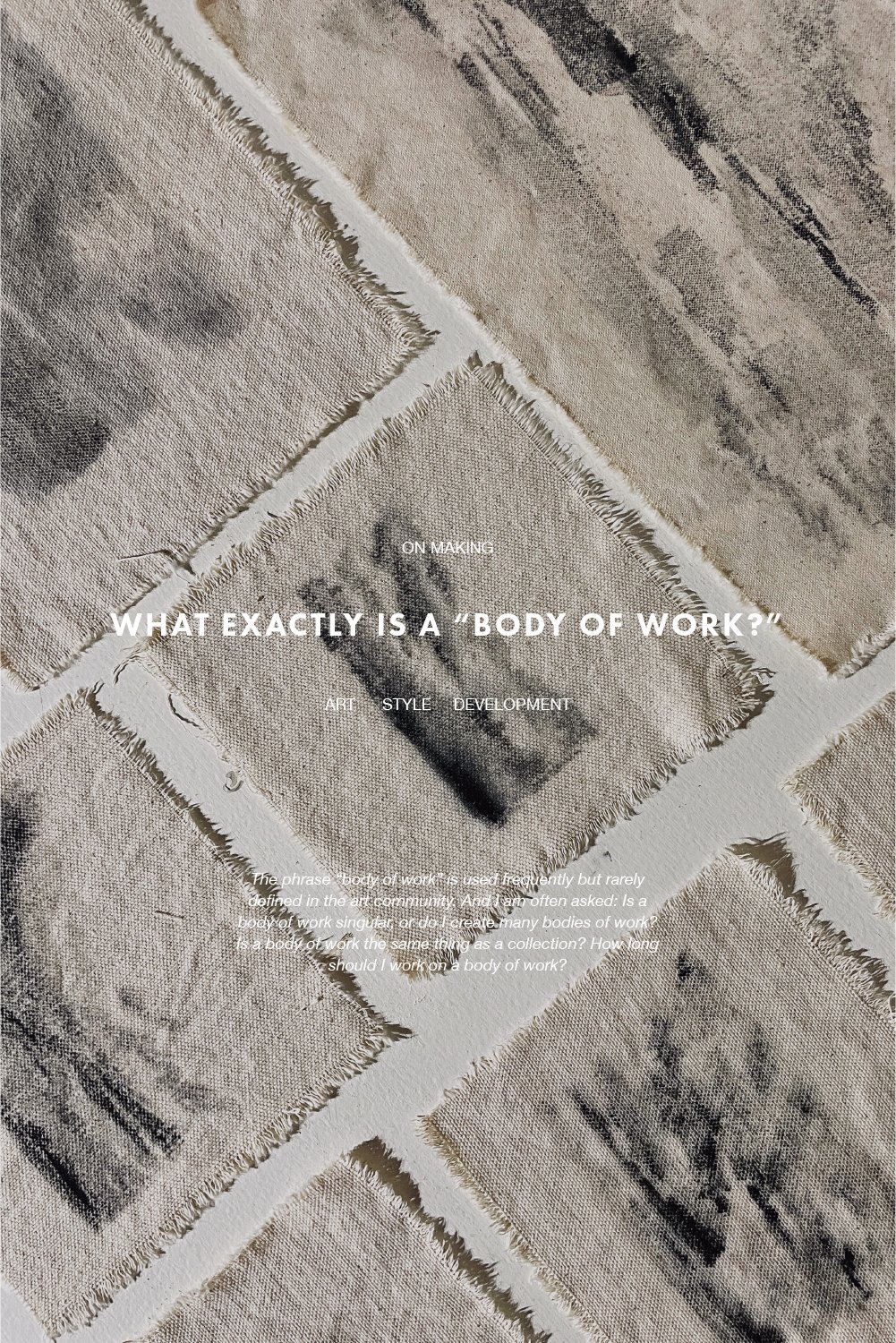What exactly is a “body of work?”
This post is a part of On Making - a weekly project where I answer questions about how to think about and develop your body of work as a visual artist. Each answer is intended to be a brief read that concludes with a guiding action you can consider immediately. If you’d like to subscribe to this ongoing support, consider joining me on Substack. Each question will be cross-posted for delivery to your inbox.
The phrase “body of work” is used frequently but rarely defined in the art community. And I am often asked: Is a body of work singular, or do I create many bodies of work? Is a body of work the same thing as a collection? How long should I work on a body of work?
I define a body of work as a series of artworks centered around a similar concept, theme, subject, or idea (more on this in a future post). A body of work can exist for a short period of time or span over the lifetime of an artist - and this is where it gets a bit more nuanced.
You can reference your portfolio of work - your lifetime creative endeavors - as your entire body of work. This is usually rooted in your medium(s) of choice and centers around your core ideas.
Alternatively, you can reference a shorter study as a body of work. This later term is often synonymous with the term “collections” or “series” of work. This shorter study is typically made up of 4-25 pieces of artwork - though the number of pieces can vary depending on the space you need to convey your concept, theme, subject, or idea.
I believe there are several compelling reasons to work in a body of work. For the sake of grounding this conversation in something tangible, I’m going to use the term body of work to mean a collection or series in the examples below; however, I place just as much merit on your entire body of work.
Working in a body of work helps you grow as an artist.
When you work in a body of work, you create several pieces of art that collectively communicate the concept, theme, subject, or idea you want to present. Though I’ve never written a novel, I imagine this process being quite similar - you have to develop characters and a plot to tell an entire story. It requires you to go deeper with your idea. To develop it from many angles while simultaneously crafting pieces that stand collectively. You’ll make several creative decisions, not just once but many times. And it’s inside of this depth that you’ll uncover an incredible amount of substance to your work, including your style and voice. This encourages both commitment and consistency - both of which are very important when growing skills.
Working in a body of work exemplifies your ability.
Since working in a body of work requires you to practice commitment and consistency, the end result will naturally exemplify your ability - your style and voice. It will provide you with a portfolio that shows you can create cohesion within an idea and offers you something to pitch to galleries. This helps your target audience, whether galleries, curators, or collections, understand your work (its meaning) and measure your proficiency. This immediate understanding will help strengthen your applications, proposals, and value propositions.
Working in a body of work helps your audience know, like, and trust you.
Your audience, whether galleries, curators, or collections, get to read your body of work. And if it’s intentionally developed, it will communicate a great deal about your ideas. Showcasing several artworks side-by-side will also give them something to experience and immerse themselves in, building space for them to like you. They’ll get a sense of your style and voice, trusting your commitment and consistency.
Working in a body of work allows you to batch work (this will resonate with some and not others)
It is true that working in a body of work helps artist batch their work. This means there is dedicated time for each phase of the process. You’ll work through inspiration, preliminary sketching, creating the artwork, talking and sharing the work, and fulfilling orders. This could also benefit you if you struggle to organize ideas or thrive in organizing ideas. You might also have a specific goal in mind, and working in this way will help focus your attention.
You should note you may choose to work in a body of work but ultimately decide against batch working. Meaning you could develop artwork in relationship to the main ideas in the collection, but you might not wait to release them all at once. Instead, you might market them as they are complete.
Working in a body of work does require consistency, commitment, and contentment. Ask yourself if this way of working is best suited for you. As you identify your creative practice approach and immerse yourself in your process, you will develop a whole lot of substance in your work. Inside this process, you have the opportunity to grow honestly as an artist.
If we haven’t had the pleasure of meeting - I’m Lauren Sauder, a landscape artist and artist mentor. If you enjoyed this post, here are a few more ways you can connect with me:
Explore more posts from On Making—a series for artists that archives my thoughts on questions I’ve received from my mentees.
Submit a Question—all submissions may be made anonymously.
Receive letters from me—bi-weekly letters from me about what I’m working through in my creative practice and life.
Enlist me as your mentor—if you are interested in unlimited support and guidance to grow your creative practice.
Get in touch with me directly—send an email to laurensauderstudio@gmail.com.
Save this post on Pinterest



